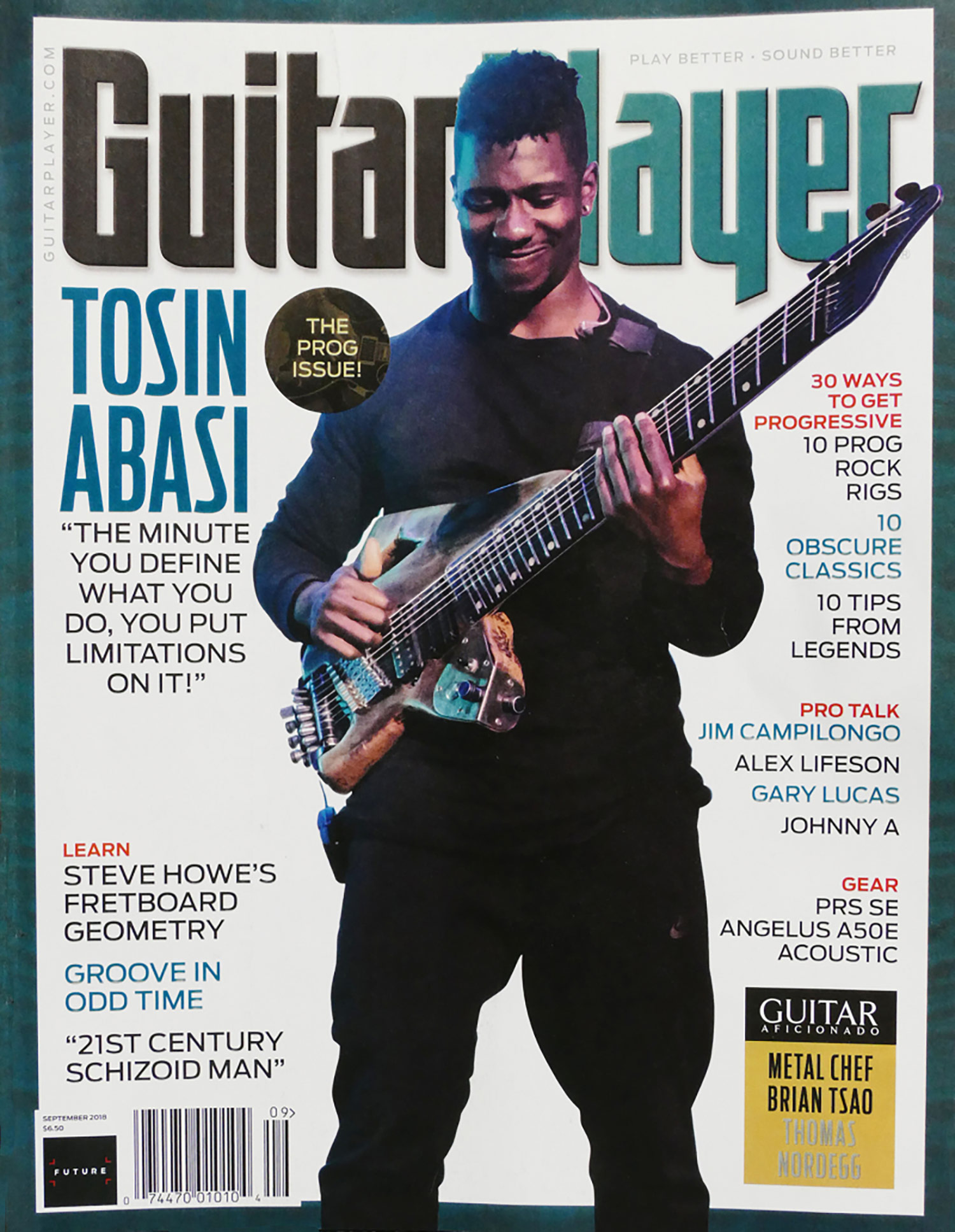When I started playing 9-string guitar, I was trying out a couple of tunings until I found what I consider best for me: BEBEADGBE (7 string standard + drop E, as many 8-string players are using it, + another B, the same as on a 5-string bass). This tuning is merging the best parts of a 5-string bass and a 7-string guitar in one instrument. What I never liked with my tuning was the "drop step" between E and B. Then I found the concept of "additional frets" below the usual ones (compare this guitar for "drop d" tuning, but with regular perfect fourths:
The 6-string "ESP FuniChar D-616", tuned DADGBE (but without the "drop irregularity"):

I love this idea! And it seems to be the solution to my problem. As you might know, luthier Rick Toone, is using this on some of his innovative guitar concepts:
The 7-string "Fathom 7XR" with two extra frets on the two lowest strings, impressively presented here:
The 8-string "Blur 8XR" (for Tosin Abasi) with two extra frets on the two lowest strings:

So what I did - as a little joking around -, was to create a mockup of an Ibanez RG9 with extra extended-range frets on the two lowest strings (see attached file). Factory tuning in mind: BEBEADBE.
What do you guys think about extra extended-range frets to avoid irregularieties/jumps in tunings?
What do you think about my concept? Might Ibanez build this as a custom guitar one day ?
?
What scale length do you think would I need for the neck (with 26 frets on the low B and E strings)?
The 6-string "ESP FuniChar D-616", tuned DADGBE (but without the "drop irregularity"):

I love this idea! And it seems to be the solution to my problem. As you might know, luthier Rick Toone, is using this on some of his innovative guitar concepts:
The 7-string "Fathom 7XR" with two extra frets on the two lowest strings, impressively presented here:
The 8-string "Blur 8XR" (for Tosin Abasi) with two extra frets on the two lowest strings:

So what I did - as a little joking around -, was to create a mockup of an Ibanez RG9 with extra extended-range frets on the two lowest strings (see attached file). Factory tuning in mind: BEBEADBE.
What do you guys think about extra extended-range frets to avoid irregularieties/jumps in tunings?
What do you think about my concept? Might Ibanez build this as a custom guitar one day
What scale length do you think would I need for the neck (with 26 frets on the low B and E strings)?

